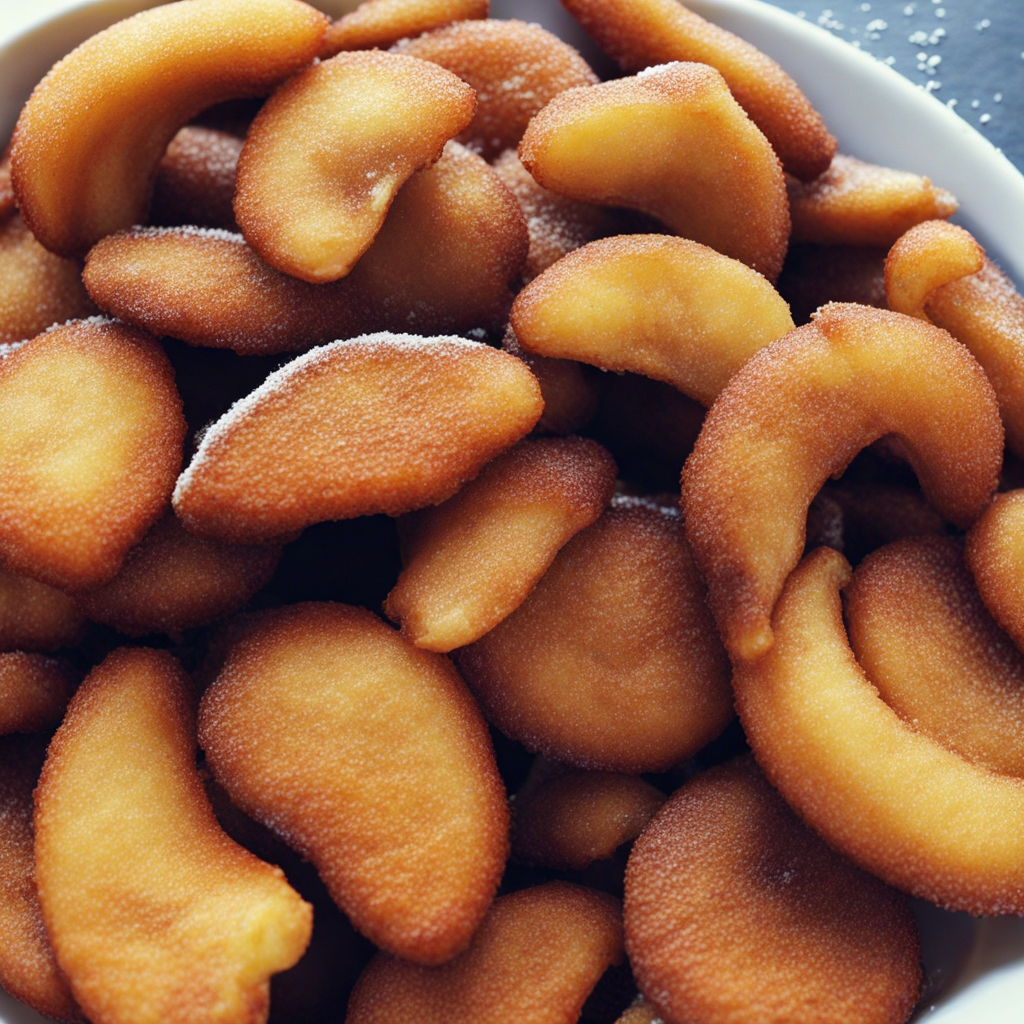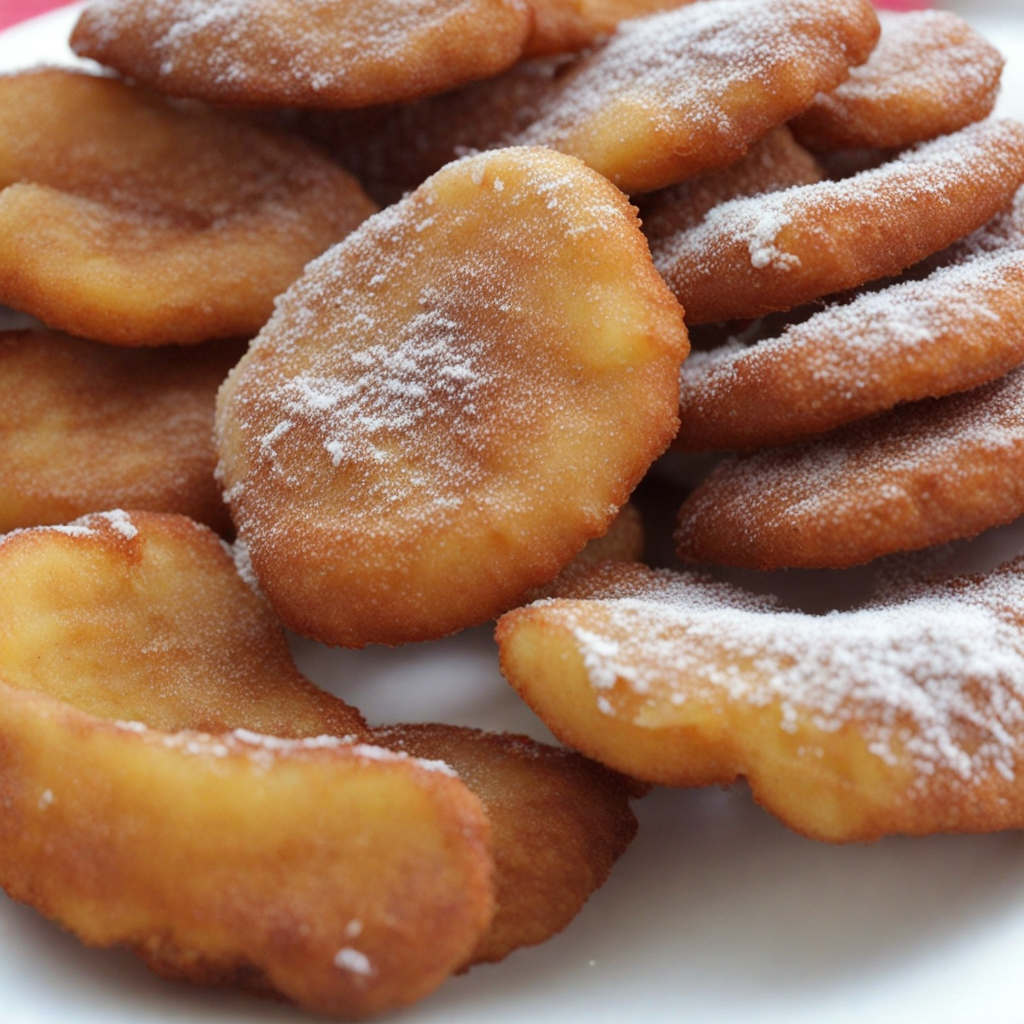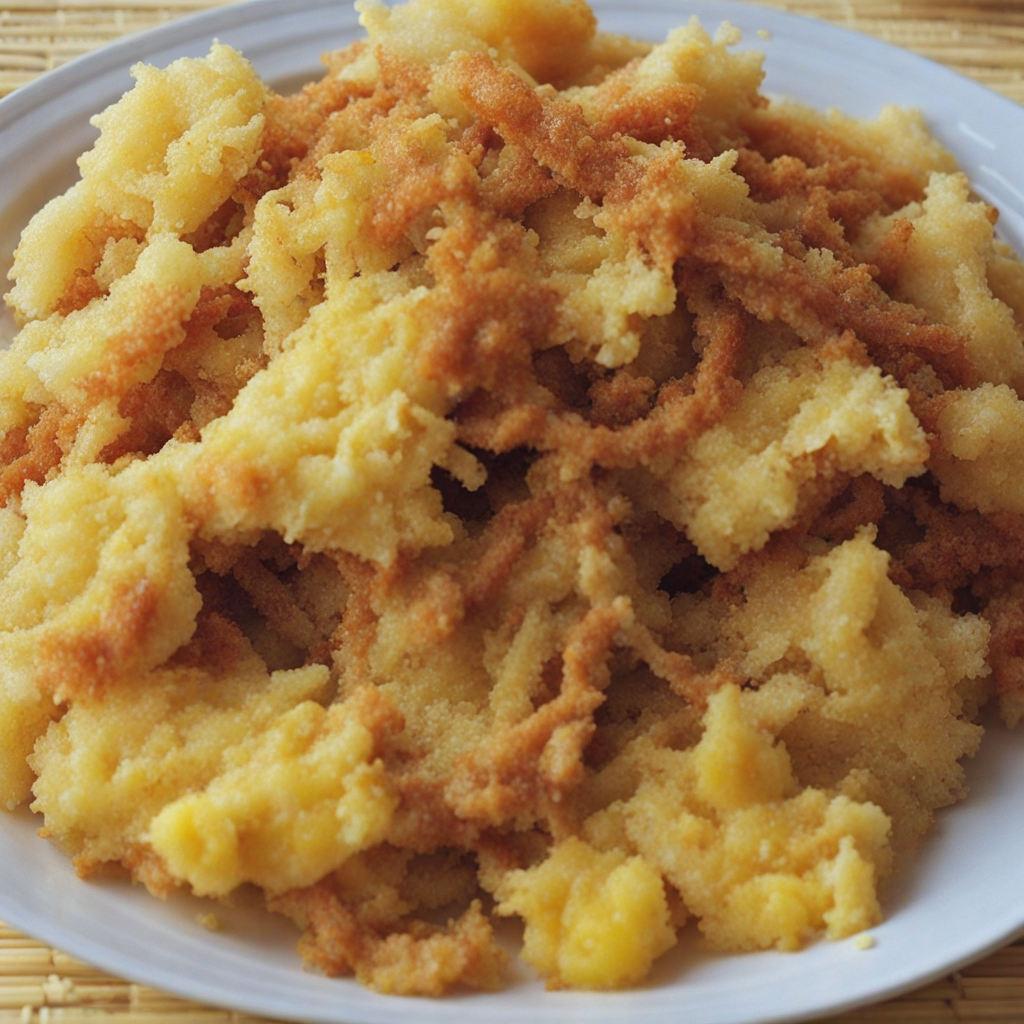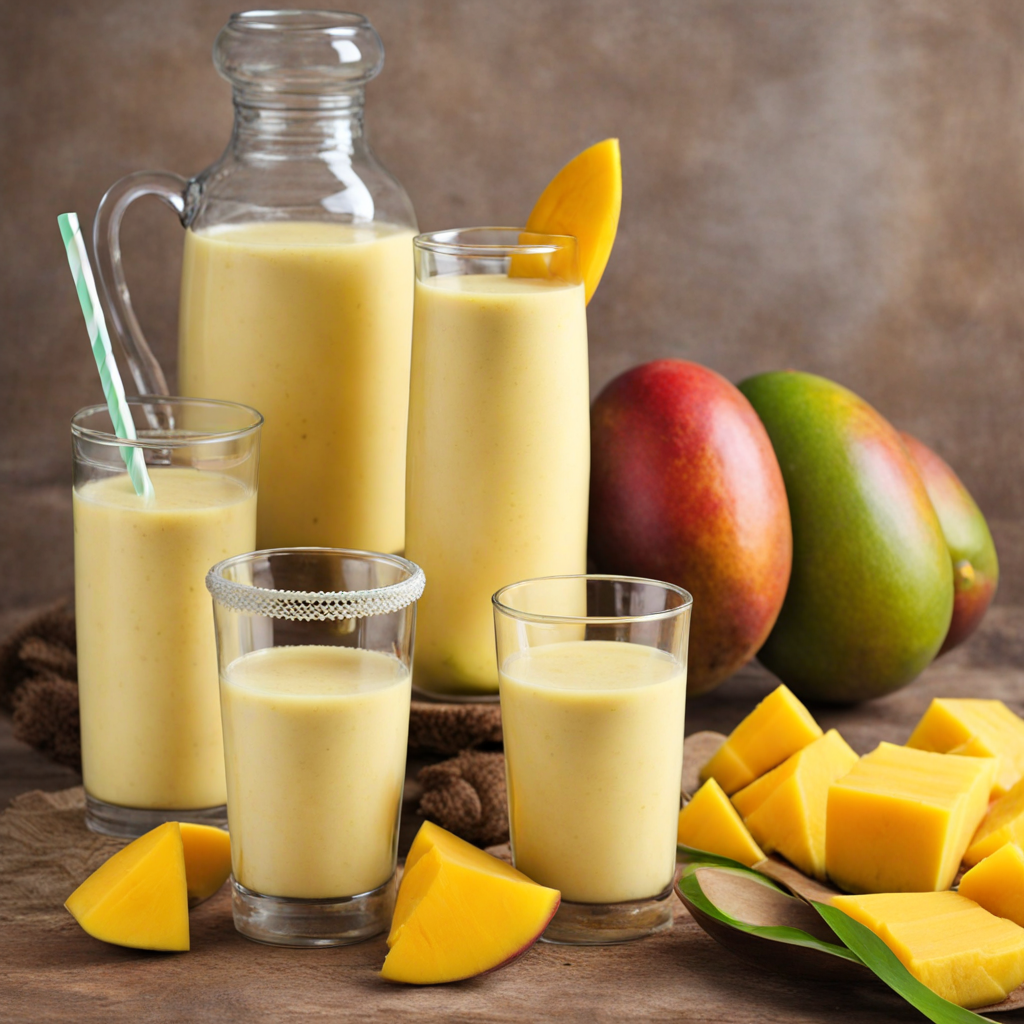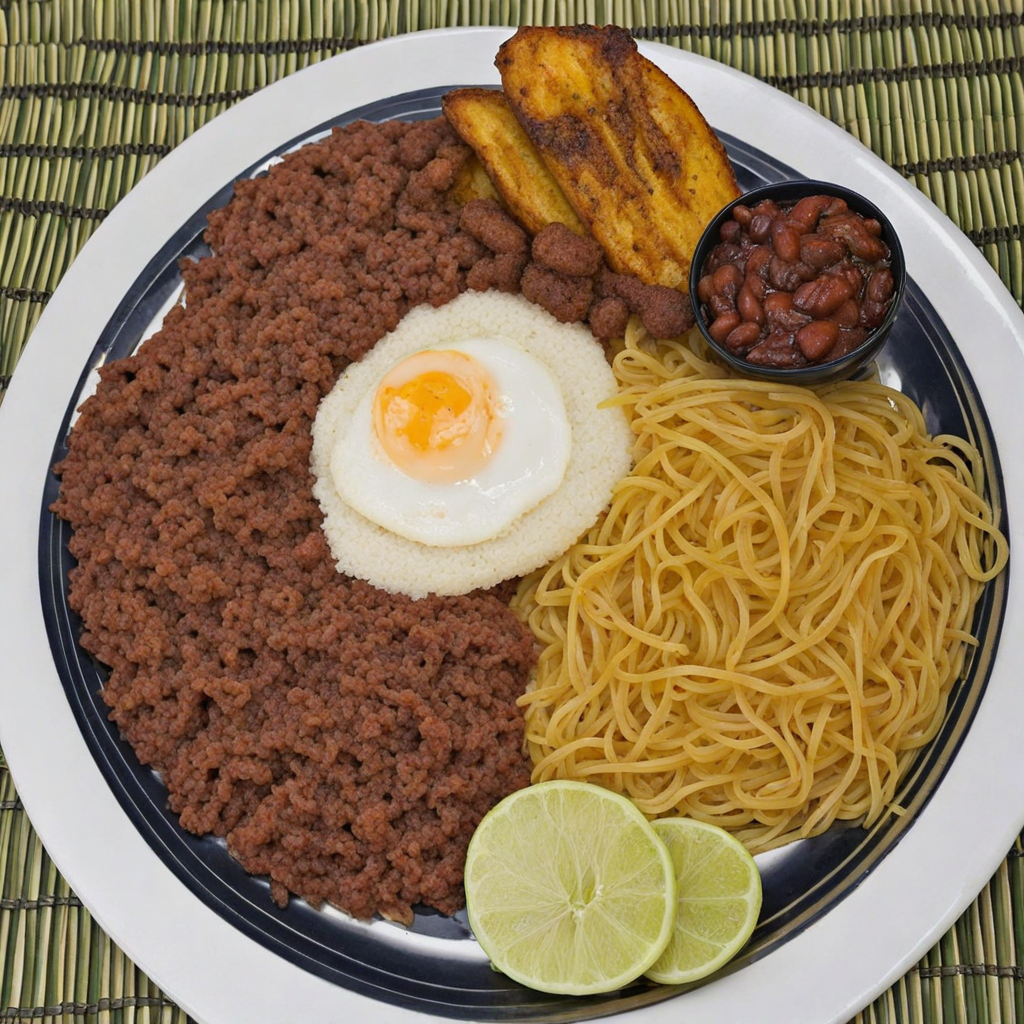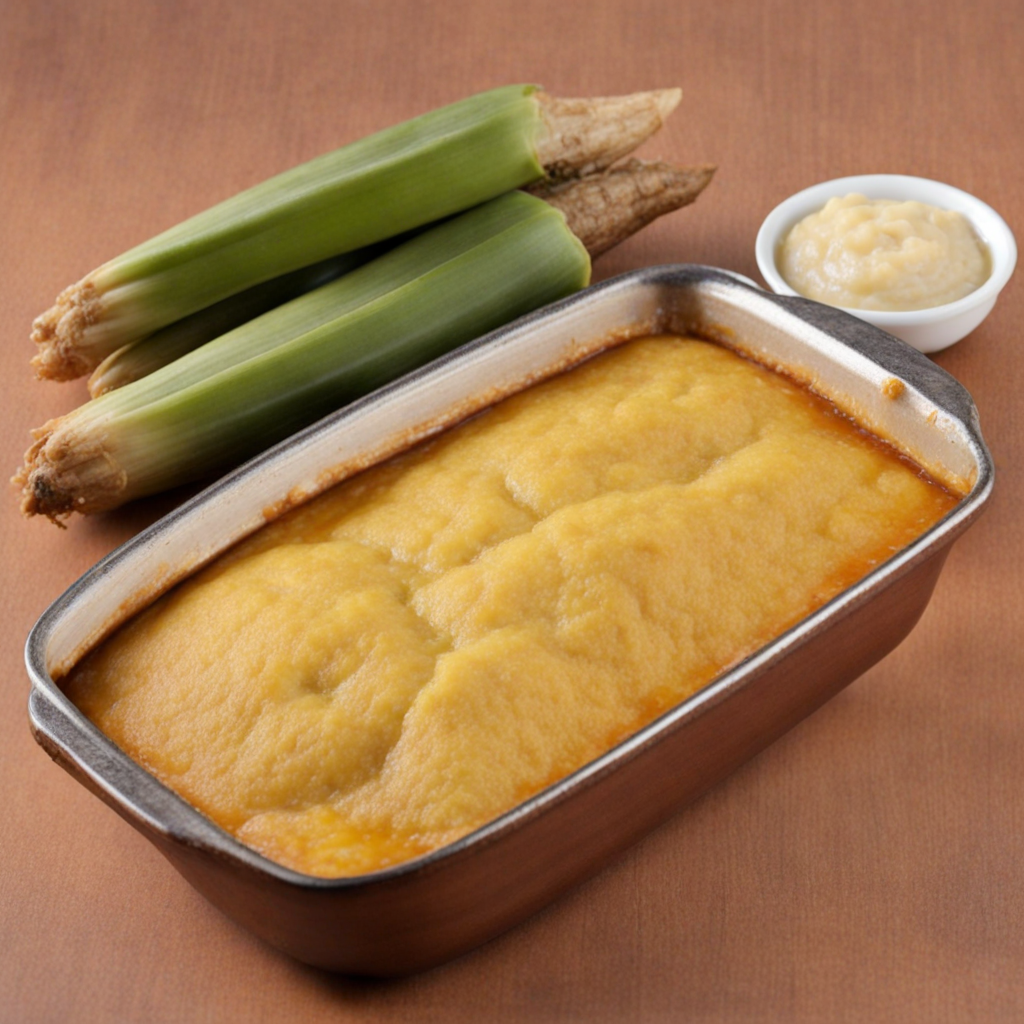Banana Fritters
Banana fritters, a delightful Ghanaian treat, are a perfect blend of sweet and savory flavors that will enchant your taste buds. Made primarily from ripe bananas, this dish showcases the natural sweetness of the fruit, which is mashed and mixed with a simple batter of flour, sugar, and spices. The batter is often enriched with a hint of nutmeg or cinnamon, enhancing the overall aroma and flavor profile. Once combined, the mixture is dropped into hot oil, transforming into golden-brown fritters that are crispy on the outside while remaining soft and tender on the inside. The cooking technique is essential in achieving the perfect banana fritters. As they fry, the fritters puff up, creating a light and airy texture that complements the sweet banana filling. The contrast between the crunchy exterior and the moist interior is simply irresistible. These fritters are often served warm, dusted with powdered sugar or accompanied by a drizzle of honey, making them an indulgent snack or a delightful dessert. Whether enjoyed at a street food stall or made at home, they evoke a sense of comfort and joy. Banana fritters are not only delicious but also versatile. They can be enjoyed on their own or paired with various dips and sauces, such as chocolate or caramel, to elevate the experience. Additionally, they can be customized by incorporating different ingredients like coconut flakes or chopped nuts, adding another layer of texture and flavor. This Ghanaian delicacy is a celebration of the humble banana, transforming it into a delectable treat that is sure to introduce anyone to the rich culinary traditions of Ghana.
How It Became This Dish
The Sweet Journey of Banana Fritters in Ghana #### Origins Banana fritters, known in Ghana as "Bofrot" or "togbei," are a delicious treat that encapsulates both the culinary traditions and agricultural bounty of the region. The origins of this delectable dish can be traced back to the West African coast, where bananas have long been cultivated. Bananas, believed to have originated in Southeast Asia, made their way to Africa around 2000 years ago, and they have since become integral to the continent's diet and culture. The introduction of bananas to Ghana coincided with the spread of the crop across various regions, where it adapted to local conditions and became a staple food. The fritters themselves are thought to have developed as a way to utilize overripe bananas, turning them into a fried snack that is both convenient and delicious. The practice of frying dough in oil is a common culinary technique across many cultures, but the specific iteration of banana fritters in Ghana showcases the unique flavors and ingredients of the region. #### Cultural Significance In Ghana, food is more than sustenance; it is a vital part of social and cultural identity. Banana fritters hold a special place in the hearts and homes of Ghanaians, often associated with celebrations, street food culture, and family gatherings. They are commonly served during festivities, including weddings and communal events, where they symbolize hospitality and togetherness. Street vendors selling banana fritters can be found throughout Ghana, particularly in urban areas where the hustle and bustle of everyday life calls for quick, satisfying snacks. These vendors often prepare the fritters fresh on the spot, enticing passersby with the warm, sweet aroma of frying batter. The act of purchasing fritters from these vendors fosters a sense of community, as locals gather to enjoy the treat and share stories, creating bonds that are reinforced over shared experiences and flavors. Banana fritters also reflect the agricultural practices of Ghana. The cultivation of bananas and the transformation of this crop into a popular dish highlight the importance of locally sourced ingredients. As a result, banana fritters represent not only a culinary delight but also the rich agricultural heritage of the region, showcasing the connection between farming and food. #### Development Over Time As Ghana has evolved, so too have its culinary practices. The basic recipe for banana fritters has remained relatively unchanged, but modifications have emerged to suit contemporary tastes and preferences. Traditionally, the ingredients for banana fritters are simple: ripe bananas, flour, sugar, baking powder, and a pinch of salt, blended together to create a thick batter. This batter is then dropped into hot oil, resulting in golden-brown fritters that are soft on the inside and slightly crispy on the outside. However, as global culinary influences permeate Ghanaian kitchens, variations have emerged. Some cooks add spices like nutmeg or cinnamon for an aromatic twist, while others incorporate coconut or chocolate into the batter. These adaptations reflect the dynamic nature of Ghanaian cuisine, which is characterized by a blending of indigenous practices with external influences. Moreover, the growing awareness of health and dietary preferences has led to innovations in preparation methods. While traditional banana fritters are deep-fried, health-conscious individuals are experimenting with baking or air-frying techniques, making the dish lighter while still retaining its beloved flavor. Such developments illustrate the intersection of tradition and modernity in Ghanaian food culture. Global Influence and Modern Recognition The global fascination with Ghanaian cuisine has increased in recent years, with dishes like banana fritters gaining recognition beyond West Africa. As the diaspora spreads across the globe, Ghanaians have introduced their culinary traditions to new audiences, leading to a renewed interest in traditional dishes. Food festivals, cultural events, and online platforms have helped elevate the profile of Ghanaian food, including banana fritters, showcasing the rich flavors and diverse ingredients that define the cuisine. Furthermore, the rise of health-conscious eating has prompted chefs and home cooks alike to explore the nutritional aspects of banana fritters. While they are often categorized as a sweet treat or dessert, the use of ripe bananas lends natural sweetness to the dish, reducing the need for added sugars. Additionally, bananas are rich in potassium and other essential nutrients, prompting a re-evaluation of how they can fit into a balanced diet. In contemporary Ghana, banana fritters continue to be a beloved snack, bridging generations and uniting people through shared memories and experiences. They are often enjoyed with a cup of tea or as a quick breakfast option, demonstrating their versatility and appeal across different contexts. #### Conclusion The story of banana fritters in Ghana is both a celebration of culinary tradition and a reflection of the dynamic nature of food culture. Rooted in the agricultural richness of the region and steeped in cultural significance, these fritters have evolved over time, adapting to modern tastes while maintaining their core identity. As they continue to delight palates both at home and abroad, banana fritters represent not only a cherished snack but also a tangible connection to Ghana's history, community, and the ever-evolving narrative of its cuisine. Through each bite, one can taste the sweet legacy of the past, the vibrant culture of the present, and the promise of future innovations in the world of food.
You may like
Discover local flavors from Ghana


